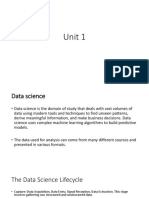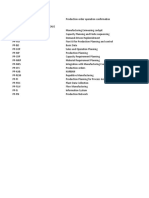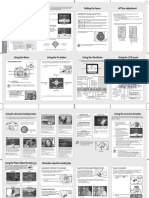0% found this document useful (0 votes)
63 views5 pagesData Science
This document provides a comprehensive overview of Data Science, detailing its core principles, methodologies, tools, applications, challenges, and future trends. It aims to equip readers with a foundational understanding of how data can be utilized to address complex problems across various industries. Key topics include the Data Science lifecycle, popular frameworks like CRISP-DM, and ethical considerations surrounding data usage.
Uploaded by
25f2000540Copyright
© © All Rights Reserved
We take content rights seriously. If you suspect this is your content, claim it here.
Available Formats
Download as DOCX, PDF, TXT or read online on Scribd
0% found this document useful (0 votes)
63 views5 pagesData Science
This document provides a comprehensive overview of Data Science, detailing its core principles, methodologies, tools, applications, challenges, and future trends. It aims to equip readers with a foundational understanding of how data can be utilized to address complex problems across various industries. Key topics include the Data Science lifecycle, popular frameworks like CRISP-DM, and ethical considerations surrounding data usage.
Uploaded by
25f2000540Copyright
© © All Rights Reserved
We take content rights seriously. If you suspect this is your content, claim it here.
Available Formats
Download as DOCX, PDF, TXT or read online on Scribd
/ 5



























































































